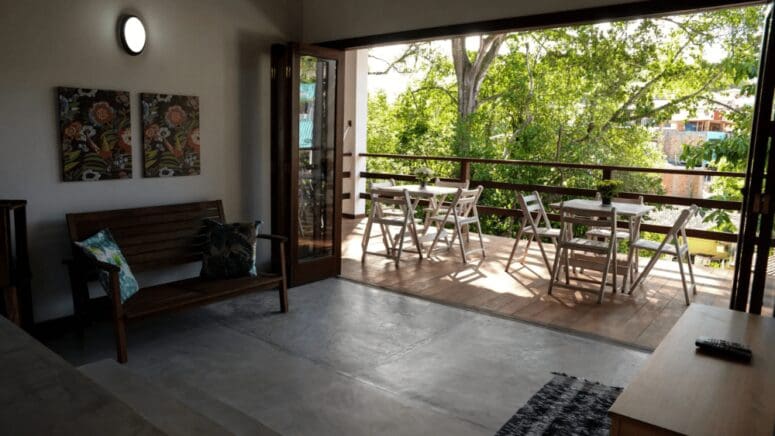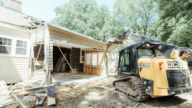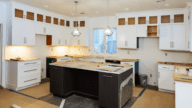How Much Does It Cost to Build a Balcony?
- Published on
- 7 min read
-
 Erika Riley, Contributing AuthorClose
Erika Riley, Contributing AuthorClose Erika Riley Contributing Author
Erika Riley Contributing AuthorErika Riley is a journalist who has written about home design and real estate in a variety of outlets primarily in New York City. Now based in the D.C. Metro area, Erika enjoys painting her furniture too many times and finding the prettiest townhouses to walk by.
-
 Jedda Fernandez, Associate EditorClose
Jedda Fernandez, Associate EditorClose Jedda Fernandez Associate Editor
Jedda Fernandez Associate EditorJedda Fernandez is an associate editor for HomeLight's Resource Centers with more than five years of editorial experience in the real estate industry.
There’s nothing more idyllic than the perfect balcony. Stepping into your own private outdoor space from your bedroom or office sounds like a dream come true. While both older and newer homes are built with balconies in mind, you may want to add one to your home yourself. But how much does it cost to build a balcony for your house?
Prices can vary depending on what kind of balcony you wish to install, your location, choice of materials, and the current landscaping of your home. But what may seem as easy as adding a patio to your house can often cost much more, according to Michael Lonsdale at Lonsdale Construction. Here’s what to factor into your balcony budget.
Average cost to build a balcony
If you want a true balcony, as in a small outdoor area attached to the side of a home without support beams beneath it, be prepared to pay a pretty penny. Most balconies are built with the original house or apartment complex, Lonsdale explains. Because balconies don’t have support beams underneath them, the support has to be built into the house itself.
“Usually [a balcony] is supported by the actual joists, the framing members that also support the house,” Lonsdale says. “You see balconies, at least in California, more on apartment buildings, condos, and bigger buildings.”
He estimates that adding a true balcony onto a two-story single-family home could cost between $20,000 and $70,000, depending on a variety of factors. However, if you want to build a second-story deck that is supported by external beams, you could easily cut those costs in half.
Balcony cost factors
There are several factors that can alter the price of your balcony addition. While some factors, like square footage, might seem obvious, there are lots of others to consider, like how you’ll get onto your balcony — sliding door? French doors? — and building materials. Here are a few factors to keep in mind before starting a balcony construction project.
Use of external beams
The biggest impact on the price of your balcony is the design. If you don’t mind the balcony looking more like a second-story deck and being supported by beams, you’ll pay much less than if you want the balcony to float.
“If you don’t do the posts, and you want to have it just floating out there, you have to run new supports under the floor,” Lonsdale explains. “So usually that means taking off the sheetrock or plaster underneath to allow you to attach them.”
These supports are usually fairly long. Lonsdale estimates that a six-foot wide balcony would have to be supported by 16-foot long wooden joists. Not only does this cost a lot more in terms of materials, it will also require a large amount of labor. Parts of your home may also be uninhabitable during the project.
“It’s usually more than you expect,” he says.
So if you want a super chic balcony like you’d find off of a Parisian house, be ready to face the price tag.
Project size
The size of your balcony will also greatly affect its cost. A balcony that’s 6 feet by 10 feet will cost more than a balcony that’s 5 by 5 feet. Additionally, the longer a balcony, the longer the support joists going into the floor.
“If you come out the door and it’s just a place to get some air and stand out there for a few minutes and that’s all they want it for, that’s smaller,” Lonsdale explains. “But others want a balcony that’s a little wider, a little longer, they can put a barbecue on one end and a couple chairs.”
A second-story deck that’s 10 by 14 feet on average costs between $2,800 and $12,600, according to HomeAdvisor. However, if you wanted something larger, like a 10-by-24-foot deck, you’d be looking at an average cost between $4,800 and $21,600. And remember, a true balcony without external support beams will cost more than the average second-story deck.
Labor cost in your market
Because constructing a balcony takes a lot of time, labor will be a large factor in your cost. Contractors all set their own rates, but you will also see a variation in labor costs based on where you live. For example, the mean hourly wage of a construction laborer is $32.59 in Massachusetts, but is $19.47 in Texas, according to the Bureau of Labor Statistics (BLS).
Materials
The materials you use for your balcony will also greatly affect your cost. However, you are limited to certain materials that can weather the elements. For example, if you use wood, you’ll need to make sure it’s pressure-treated so it won’t warp and rot from exposure to the weather.
“The huge concern with balconies is keeping them watertight and building them with a pressure-treated material,” Lonsdale comments, referring to material like wood that has been infused with preservatives to protect from rot and insects. “Everything outside has to be pressure-treated.”
Materials like iron and stone will generally cost more to work with, although you may find them more aesthetically pleasing. Adding other embellishments like ceramic tile can also add to your costs.
Balustrade design
Similar to the materials, the type of balustrade — or support columns — you choose will affect the price of your project. The columns typically hold up an awning or veranda. But even if you don’t have something on top of your balcony, you’ll need a railing. Railings can be very inexpensive if you want a simple design, but can become very costly.
But again, it all depends on how ornate you want your balcony to be.
“Whenever I hear ‘balcony,’ I think of something a little more architecturally integral to the building,” Lonsdale says. “Something that looks like it’s not just planted on there, it’s intentional, it has some sort of shape to it and some nice features.”
Access (door, retractable wall etc)
If you’re building a balcony where there previously was nothing, you’ll most likely need to install some kind of door on the wall bordering the balcony. There are lots of options here; you could install a standard door, a glass sliding door, French doors, or even a retractable wall. Some choices are more costly than others. For example, costs for a sliding door start around $250 while French doors start around $211.
“That’s a big factor, and there’s different types of doors, and depending on what type of siding they have, and finishes on the inside and trimwork, the cost will change,” Lonsdale comments.
Other features (veranda, electrical for built-in lighting, etc)
You have many options when it comes to coverings for your balcony. If you want to use it in the rain, you’ll have to opt for something more waterproof than simple fabric. However, if you only want a covering to occasionally shade the sun, you will most likely have more affordable options.
“You can do a material awning, aluminum, all sorts of different things,” Lonsdale explains. “That’s another thing to consider with the pricing.”
You may also want to add electricity to your balcony, which will usually require the assistance of an electrician. Adding built-in lights will also cost you extra.
The bottom line
In the end, the question of “how much does it cost to build a balcony?” will have varied answers depending on the size of your desired balcony, its style, its materials, and your location. However, if you want a true balcony — as in one that does not have vertical support beams beneath it — you’re most likely going to pay between $20,000 and $70,000, according to Lonsdale. However, if you’re okay with a second-story deck, you can expect to pay less than half of those costs.
Now that you know the costs, hopefully, you’re a bit closer to watching the sunset from your very own balcony.
Header Image Source: (Petrusca Filha / Unsplash)




